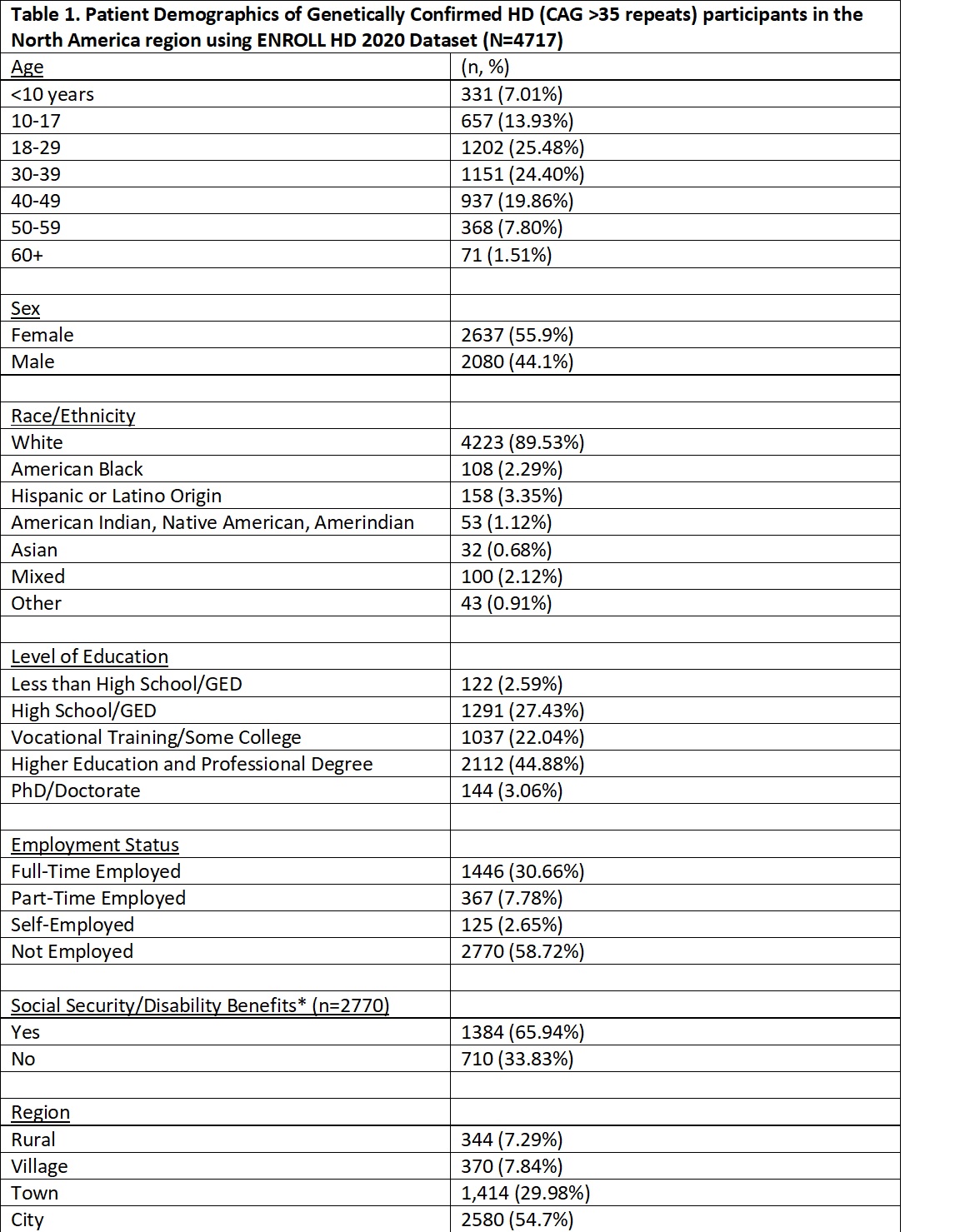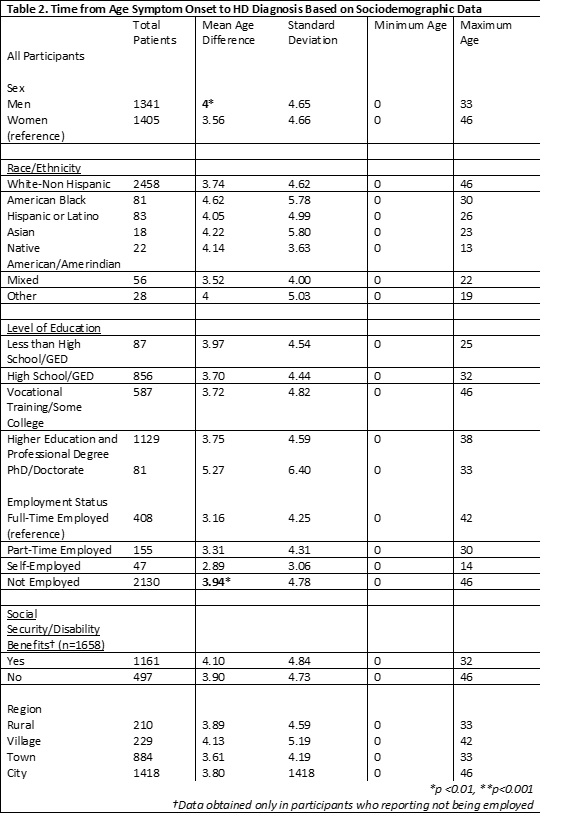Category: Huntington's Disease
Objective: To describe social and structural determinants of health of HD patients and to evaluate the feasibility of using this dataset for health services research.
Background: Health services research evaluates patients’ access to care, the effectiveness of interventions in outcomes, and informs healthcare policy and financing. Social and structural determinants of health are factors that may affect healthcare access and outcomes. I used data from ENROLL HD to describe social and structural determinants of health in patients with HD and to evaluate the feasibility of using the dataset to understand delays in access to HD care.
Method: Using the ENROLL-HD 2020 dataset, we identified sociodemographic variables associated with health disparities. These included race/ethnicity, level of education, employment status, social security/disability benefit recipience, and region of residence. The outcome variable of interest was delay in HD diagnosis as defined by a constructed variable subtracting age of symptom onset from age of diagnosis in participants with 36≥ CAG repeats. We use descriptive and summary statistics to describe sociodemographic and outcome variables of interest (time-to-HD-diagnosis). Simple regression models were used to identify differences between the variables (p=0.05)
Results: Of 4717 participants in the North American region, 10% identified as an ethnicity other than white. 3.35% (n=158) identified as Latino, and 2.29% (n=108) as Black. 58.72% of participants were unemployed, and 34% did not receive social security or disability benefits. There was a large percentage of missing data for age of symptom onset (30.2%) and age of HD diagnosis (33.6%). The average time-to-HD diagnosis was 3.78 years (n=2746, SD 4.66). The average time-to-HD diagnosis for men was four years compared to 3.56 for women. (p<0.001) For Black patients, it was 4.62 years (n=81, SD 5.78), and for Latino patients, 4.05 years (n=81, SD 4.99), although these differences were not statistically significant. Not being employed was associated with a 0.93 increase in time-to-HD diagnosis compared to employed participants (p<0.001).
Conclusion: There’s a large percentage of missing data in the ENROLL HD dataset, limiting the use of the dataset for analysis on healthcare disparities. Yet, in this study, we identify lack of employment as a potential delay in HD diagnosis.
References: Dahodwala, N., & Meyer, A. C. (2010). Emerging Subspecialties in Neurology: Health services research. Neurology, 74(10), e37. https://doi.org/10.1212/WNL.0B013E3181D31E6F
Social Determinants of Health – Healthy People 2030 | health.gov. (n.d.). Retrieved March 14, 2022, from https://health.gov/healthypeople/objectives-and-data/social-determinants-health
To cite this abstract in AMA style:
A. Mendizabal, S. Perlman, Y. Bordelon. Feasibility of using ENROLL-HD for health services research: Evaluation of delays in Huntington’s Disease (HD) Diagnosis [abstract]. Mov Disord. 2022; 37 (suppl 2). https://www.mdsabstracts.org/abstract/feasibility-of-using-enroll-hd-for-health-services-research-evaluation-of-delays-in-huntingtons-disease-hd-diagnosis/. Accessed January 4, 2026.« Back to 2022 International Congress
MDS Abstracts - https://www.mdsabstracts.org/abstract/feasibility-of-using-enroll-hd-for-health-services-research-evaluation-of-delays-in-huntingtons-disease-hd-diagnosis/


